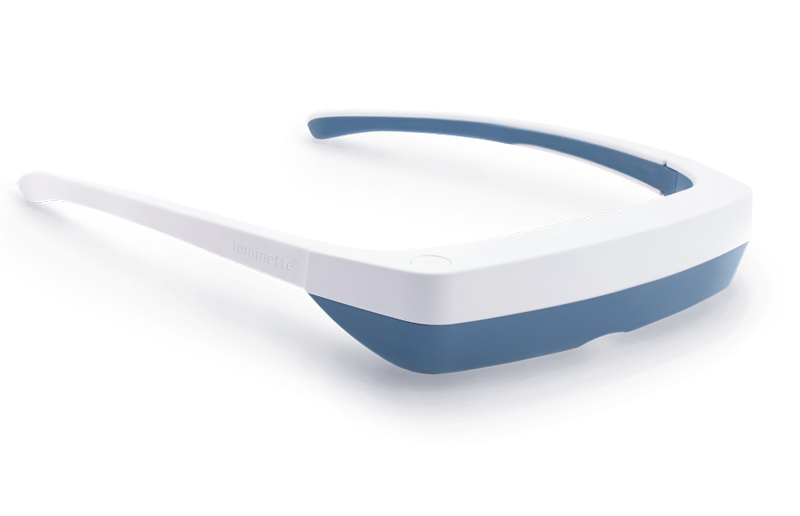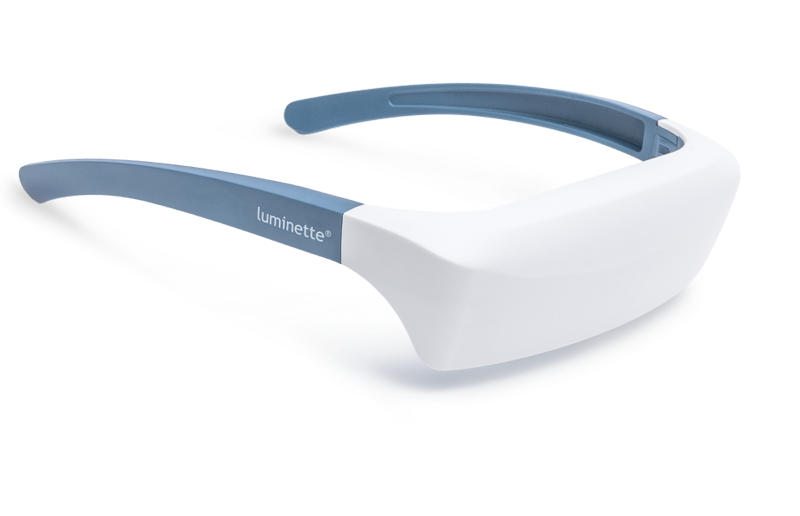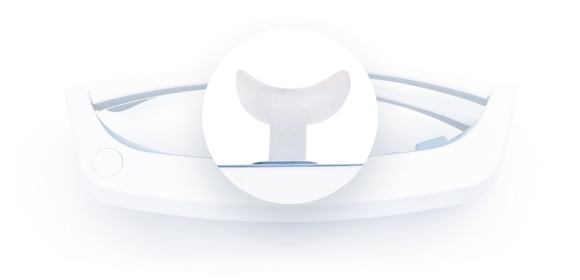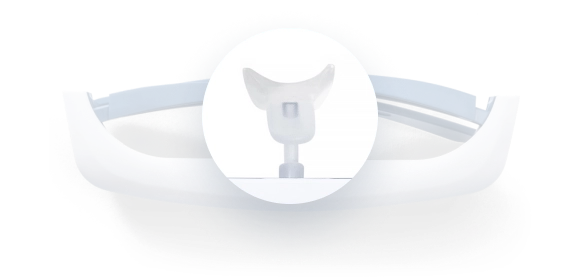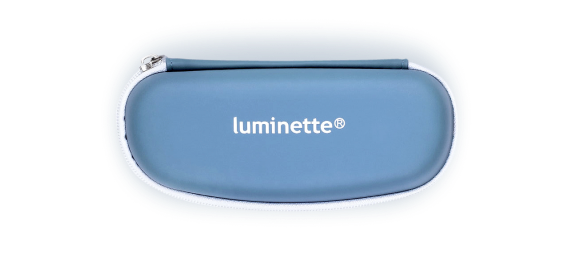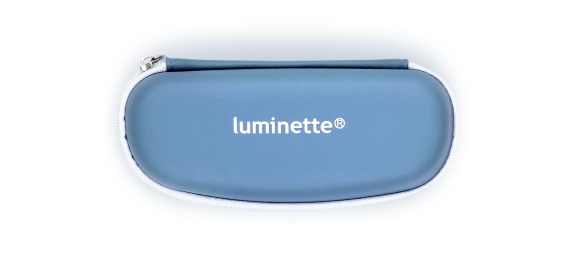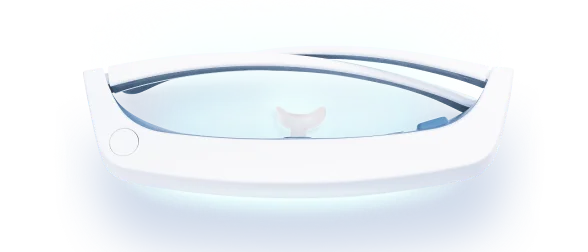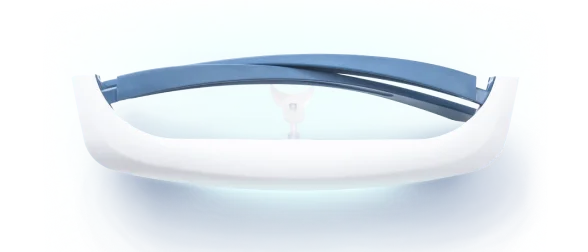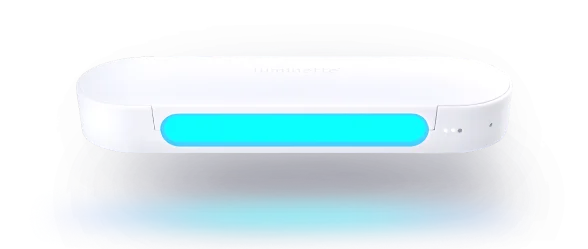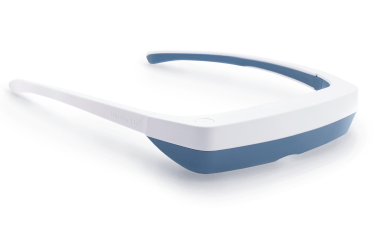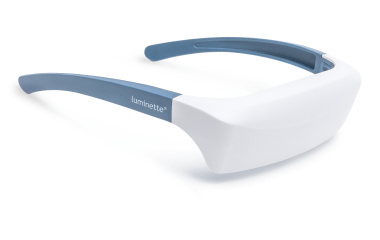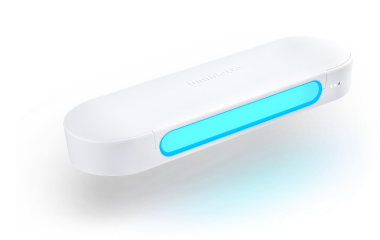Зміст
Люди природно прагнуть до сонячного світла, оскільки воно приносить численні користі для нашого здоров’я та добробуту. Однак сучасний спосіб життя та обмежений доступ до природного світла можуть призвести до дефіциту сонячного світла, що викликає різні проблеми, такі як коливання настрою, низький рівень енергії та порушення сну. Саме тут на допомогу приходять лампи для світлотерапії. Світлотерапія, також відома як фототерапія, передбачає використання спеціально розробленої лампи, яка випромінює яскраве світло, що імітує природне сонячне світло, забезпечуючи низку користей для здоров’я. У цій статті ми розглянемо концепцію світлотерапії, як вона працює та конкретні переваги використання лампи для світлотерапії.
Що таке світлотерапія?
Світлотерапія — це форма лікування, що передбачає вплив певних довжин хвиль світла для лікування різних станів. Вона переважно використовується для імітації ефектів природного сонячного світла в ситуаціях, коли люди не мають регулярного доступу до сонячного світла, наприклад, у зимові місяці або в регіонах з обмеженою кількістю світлових годин. Світлотерапія може застосовуватися для лікування психічних розладів, проблем зі сном та інших станів, на які впливає вплив світла.

Що таке лампа для світлотерапії?
Лампа світлотерапії — це пристрій, який випромінює яскраве та інтенсивне світло, зазвичай імітуючи природне сонячне світло. Її також називають фототерапевтичною лампою або сонячною лампою. Світло, яке виробляють ці лампи, може коливатися від 2 500 до 10 000 люкс (одиниця вимірювання інтенсивності світла). Це значно сильніше за освітлення в приміщенні, яке становить від 50 до 200 люкс. Лампи світлотерапії розроблені так, щоб бути безпечними та зручними у використанні, що робить їх зручним варіантом для людей, які шукають переваги природного світла.
Як працює світлотерапія?
Світлотерапія працює, імітуючи ефекти природного сонячного світла на наш організм. Наш мозок має складну систему, яка регулює циркадний ритм (внутрішній годинник, що контролює цикл сну та неспання) залежно від кількості отриманого світла. При впливі яскравого світла активуються певні ділянки мозку, що сигналізує про вироблення гормонів, таких як серотонін і мелатонін. Ці гормони відіграють ключову роль у регулюванні настрою, рівня енергії та режиму сну.
Серотонін
Серотонін часто називають «гормоном щастя», оскільки він відповідає за регулювання настрою, щастя та загального благополуччя. Вплив яскравого світла через лампи світлотерапії може збільшити вироблення серотоніну в мозку, покращуючи настрій і зменшуючи симптоми депресії та тривоги.
Мелатонін
Мелатонін — це гормон, який регулює наш цикл сну та неспання. Зазвичай він виробляється ввечері, коли темніє, сигналізуючи нашому організму готуватися до сну. Лампи світлотерапії можуть допомогти регулювати вироблення мелатоніну, імітуючи природне сонячне світло, що сигналізує організму виробляти менше мелатоніну вдень і більше вночі. Це може допомогти людям із порушеннями сну та тим, хто відчуває збої у режимі сну через обмежений доступ до природного світла.
Корисні властивості ламп світлотерапії
Останніми роками лампи світлотерапії привернули увагу завдяки своїм обнадійливим перевагам у сприянні фізичному та психічному благополуччю. Ці пристрої, розроблені для імітації природного сонячного світла, все більше визнаються як практичне рішення для тих, хто стикається з сезонним афективним розладом, порушеннями сну та загальною втомою. Випромінюючи певну інтенсивність світла, вони допомагають регулювати внутрішній годинник організму, покращувати настрій і підвищувати рівень енергії. У наступних розділах буде розглянуто безліч способів, якими лампи світлотерапії можуть сприяти покращенню здоров’я, розкриваючи, як використання сили світла може привести до більш збалансованого та енергійного життя.
Покращення якості сну
Лампи світлотерапії можуть відігравати важливу роль у покращенні якості вашого сну. Вплив природного світла протягом дня допомагає регулювати циркадний ритм організму, що є необхідним для підтримки здорового циклу сну та неспання. На жаль, багато людей не отримують достатньо сонячного світла через спосіб життя в приміщенні або географічне розташування.
Використання ламп світлотерапії вранці може допомогти скинути ваш внутрішній годинник. Яскраве світло сигналізує мозку зменшити вироблення мелатоніну — гормону, що відповідає за сонливість. Це допомагає почуватися більш бадьорим протягом дня і сприяє кращому сну вночі.
Дослідження показали, що люди, які регулярно використовують лампи світлотерапії, мають покращені схеми сну. Вони швидше засинають і насолоджуються глибшим, більш відновлювальним сном. Це може призвести до підвищення рівня енергії та покращення загального здоров’я.
Зменшення симптомів сезонних коливань настрою
Сезонні коливання настрою — це тип розладу, який зазвичай виникає в зимові місяці, коли світловий день коротший. Відсутність сонячного світла може порушити природні ритми вашого тіла і призвести до почуття смутку, втоми та безнадійності.
Лампи світлотерапії є одним із найефективніших методів лікування сезонних коливань настрою. Яскраве світло імітує природне сонячне світло, допомагаючи полегшити симптоми цього стану. Використовуючи лампу світлотерапії приблизно 20-30 хвилин щоранку, ви можете значно зменшити тяжкість симптомів.
Підвищення настрою та рівня енергії
Відчуваєте втому або пригнічений настрій? Лампи світлотерапії можуть бути природним і ефективним способом підвищити настрій і рівень енергії. Яскраве світло цих ламп стимулює вироблення серотоніну та ендорфінів, відомих як гормони «гарного самопочуття».
Використання лампи світлотерапії вранці може допомогти вам почуватися більш енергійним і мотивованим протягом дня. Це особливо корисно для тих, хто відчуває низький рівень енергії в зимові місяці або бореться з хронічною втомою.
Включення світлотерапії у ваш щоденний режим може позитивно вплинути на ваше загальне самопочуття. Покращуючи настрій і рівень енергії, ви можете підвищити продуктивність, концентрацію та задоволення від повсякденних справ.
Переваги ламп світлотерапії для здоров’я шкіри
Потужні переваги світлотерапії виходять за межі покращення настрою та регулювання сну, включаючи вражаючі переваги для здоров’я шкіри. Різні довжини хвиль світла доведено допомагають у лікуванні різноманітних шкірних захворювань, таких як акне, псоріаз і екзема. Використовуючи певні типи світла, ці лампи спрямовують і активують клітинні процеси, що сприяють омолодженню шкіри, зменшенню запалення та прискоренню загоєння. Оскільки все більше людей шукають неінвазивні методи лікування, світлотерапія стає перспективним рішенням у дерматології. У наступних розділах ми розглянемо, як лампи світлотерапії сприяють здоровішій шкірі, ілюструючи їхній потенціал допомогти досягти чистішої, більш сяючої шкіри.
Переваги для лікування акне
Світлотерапія — це не лише для настрою та сну; вона також може творити дива для вашої шкіри. Особливо терапія синім світлом довела свою ефективність у лікуванні акне. Синє світло проникає в шкіру і націлюється на бактерії, що викликають акне.
Регулярне використання терапії синім світлом може зменшити кількість висипань і покращити загальний вигляд вашої шкіри. Це неінвазивне та безболісне лікування, яке можна проводити вдома за допомогою лампи світлотерапії, призначеної для цієї мети.
На відміну від деяких лікувань акне, які можуть бути жорсткими та подразнюючими, терапія синім світлом є делікатною для шкіри. Вона не викликає сухості чи почервоніння, що робить її придатною для всіх типів шкіри. Багато людей повідомляють про помітні покращення у своєму акне вже після кількох тижнів регулярного використання.
Антивіковий ефект та омолодження шкіри
Терапія червоним світлом — це ще одне популярне застосування ламп світлотерапії. Цей тип світла проникає глибше в шкіру і стимулює вироблення колагену та еластину, які є необхідними для підтримки молодої та здорової шкіри.
Регулярне використання терапії червоним світлом може допомогти зменшити появу дрібних зморшок і ліній. Вона сприяє омолодженню шкіри, підвищуючи кровообіг і зменшуючи запалення. З часом це може призвести до більш сяючої та молодої шкіри.
Окрім своїх антивікових переваг, терапія червоним світлом також може допомогти при таких станах, як розацеа, екзема та псоріаз. Це універсальне лікування, яке може покращити загальний стан і зовнішній вигляд вашої шкіри без необхідності інвазивних процедур.
Переваги ламп світлотерапії для психічного здоров’я
Лампи світлотерапії все більше визнаються не лише за їх фізичні переваги, а й за значний внесок у психічне здоров’я. Як неінвазивний варіант, ці лампи мають трансформаційний потенціал для людей, які борються з різними проблемами психічного здоров’я. Їх здатність імітувати природне сонячне світло допомагає підвищити настрій, боротися з депресивними симптомами та покращувати загальний психологічний стан. Перш ніж заглиблюватися в те, як світлотерапія може допомогти при конкретних психологічних станах, важливо зрозуміти основні механізми, за допомогою яких ці лампи можуть позитивно впливати на психічне здоров’я. Досліджуючи ці впливи, ми можемо краще оцінити їхню роль у сприянні емоційній стабільності та стійкості.
Полегшення розладів настрою та тривожності
Розлади настрою та тривожність — це поширені психічні стани, які можуть суттєво впливати на якість життя. Лампи для світлотерапії довели свою ефективність у полегшенні симптомів обох станів.
Яскраве світло від цих ламп допомагає регулювати вироблення нейромедіаторів, таких як серотонін і дофамін. Ці хімічні речовини відіграють важливу роль у регулюванні настрою і можуть допомогти зменшити відчуття смутку та тривоги.
Використання лампи для світлотерапії приблизно 30 хвилин щоранку може помітно покращити ваш настрій і психічне самопочуття. Це природне і неінвазивне лікування, яке можна застосовувати разом з іншими терапіями або медикаментами.
Покращення концентрації та когнітивних функцій
Важко зосередитися або відчуваєте розумову затуманеність? Лампи для світлотерапії можуть допомогти покращити когнітивні функції та підвищити розумову ясність. Яскраве світло стимулює мозок і сприяє пильності, що полегшує концентрацію на завданнях.
Дослідження показали, що вплив яскравого світла може покращити когнітивні функції, пам’ять і час реакції. Це особливо корисно для людей, які працюють у середовищах з обмеженим природним світлом або мають нерегулярний режим сну.
Включення світлотерапії у ваш щоденний режим допоможе залишатися зосередженим і уважним протягом усього дня. Це простий, але ефективний спосіб підвищити продуктивність і розумову гостроту.
Як користуватися лампою для світлотерапії?
Використання лампи для світлотерапії — це простий і зрозумілий процес. Ось кілька загальних рекомендацій щодо використання лампи для світлотерапії:
-
Визначте оптимальний час для світлотерапії: Світлотерапія зазвичай найбільш ефективна, якщо проводиться вранці, протягом двох годин після пробудження. Це допомагає регулювати циркадний ритм і підвищувати рівень енергії на день.
-
Правильно розмістіть лампу: Розмістіть лампу для світлотерапії на відстані приблизно 16-24 дюйми від обличчя. Світло має бути спрямоване на очі, але не слід дивитися прямо в світло. Деякі лампи для світлотерапії мають регульовані підставки або кронштейни, які дозволяють розташувати лампу під потрібним кутом.
-
Починайте з короткого сеансу: Починайте з сеансу тривалістю 10-15 хвилин і поступово збільшуйте тривалість до 30 хвилин - однієї години, залежно від ваших конкретних потреб. Важливо починати повільно, щоб дати тілу звикнути до світлотерапії.
-
Дотримуйтеся сталого графіка: Для досягнення найкращих результатів проводьте сеанси світлотерапії в один і той же час щодня. Послідовність є ключем до регулювання циркадного ритму та отримання максимальних переваг світлотерапії.
-
Проконсультуйтеся з медичним фахівцем: Якщо у вас є хронічні захворювання або занепокоєння, рекомендується проконсультуватися з медичним фахівцем перед початком світлотерапії. Вони можуть надати персоналізовані рекомендації та вказівки, виходячи з ваших індивідуальних потреб.
Вибір правильної лампи для світлотерапії
Вибір правильної лампи для світлотерапії є ключовим для забезпечення її ефективності та безпеки. Ось кілька факторів, які слід врахувати при виборі лампи для світлотерапії:
-
Рівень яскравості: Обирайте лампу, яка випромінює світло в діапазоні від 5 000 до 10 000 люкс, оскільки ця інтенсивність схожа на природне сонячне світло. Чим вищий рівень люкс, тим коротша рекомендована тривалість сеансу.
-
Захист від UV: Переконайтеся, що обрана вами лампа для світлотерапії забезпечує належний захист від UV-випромінювання. Надмірне опромінення UV може бути шкідливим для очей і шкіри. Шукайте лампи, які фільтрують шкідливі UV-промені.
-
Розмір і портативність: Враховуйте розмір і портативність лампи для світлотерапії, особливо якщо плануєте використовувати її в різних місцях або під час подорожей. Компактні та легкі лампи зручніші для транспортування.
-
Функції та керування: Деякі лампи для світлотерапії пропонують додаткові функції, такі як регульовані рівні яскравості, таймери та програмовані налаштування. Враховуйте свої вподобання та потреби при виборі лампи з певними функціями.
-
Репутація продукту та відгуки: Досліджуйте та читайте відгуки про різні лампи для світлотерапії, щоб оцінити їх ефективність і задоволеність клієнтів. Шукайте надійні бренди, які спеціалізуються на продуктах для світлотерапії.

Однією з ламп для світлотерапії, що виділяється на ринку, є лампа Drive для світлотерапії від MyLuminette. Лампа Drive спеціально розроблена для людей з активним способом життя, забезпечуючи портативне та зручне рішення для світлотерапії. Вона має інтенсивність 10 000 люкс, що гарантує оптимальне освітлення для покращення настрою, підвищення рівня енергії та регулювання циркадного ритму. Її компактний розмір і легкий дизайн роблять її ідеальною для використання в дорозі. Завдяки позитивним відгукам клієнтів та орієнтації на якість і ефективність, лампа Drive для світлотерапії є відмінним вибором для тих, хто шукає переваги світлотерапії.
Чи безпечні світлотерапевтичні лампи?
Світлотерапевтичні лампи загалом вважаються безпечними та неінвазивними при правильному використанні. Однак важливо дотримуватися інструкцій виробника та проконсультуватися з медичним фахівцем, якщо у вас є будь-які хронічні захворювання або занепокоєння. Деякі люди можуть мати специфічні чутливості або стани, які вимагають додаткових заходів безпеки, наприклад, використання ламп з UV-фільтром або регулювання інтенсивності світла.
Що слід врахувати перед початком світлотерапії?
Перед початком світлотерапії слід врахувати кілька моментів:
-
Проконсультуйтеся з медичним фахівцем: Якщо у вас є будь-які хронічні захворювання або занепокоєння, рекомендується проконсультуватися з медичним фахівцем перед початком світлотерапії. Вони можуть надати рекомендації та переконатися, що світлотерапія підходить саме для ваших потреб.
-
Тривалість і інтенсивність: Визначте відповідну тривалість і інтенсивність світлотерапії для ваших індивідуальних потреб. Найкраще починати з коротших сеансів і поступово збільшувати тривалість, щоб дати тілу можливість адаптуватися до світла.
-
Час доби: Світлотерапія найефективніша вранці, протягом двох годин після пробудження. Врахуйте свій щоденний розклад і визначте найкращий час для включення світлотерапії у свій режим.
-
Послідовність: Послідовність є ключовою для ефективності світлотерапії. Встановіть регулярний графік і дотримуйтеся його, щоб регулювати свій циркадний ритм і отримати максимальну користь.
-
Захист очей: Хоча лампи для світлотерапії розроблені так, щоб бути безпечними для очей, рекомендується уникати прямого дивлення в світло. Якщо ви відчуваєте дискомфорт, почервоніння або подразнення очей, зверніться до медичного фахівця.

Висновок
На завершення, переваги ламп для світлотерапії виходять далеко за межі їхнього світіння. Як ми розглянули різні переваги — від підвищення настрою та регулювання сну до боротьби з втомою та покращення загального самопочуття — стає очевидним, що ці пристрої є потужними інструментами на шляху до здоровішого та більш збалансованого способу життя. Неінвазивний характер світлотерапії, у поєднанні з її доступністю та мінімальними побічними ефектами, робить її привабливим варіантом для тих, хто шукає альтернативи традиційним методам. Незалежно від того, чи обираєте ви стаціонарну світлову коробку для спеціального простору, чи віддаєте перевагу гнучкості портативного пристрою, такого як Light Therapy Lamp Drive, впровадження світлотерапії у повсякденне життя пропонує практичний і ефективний спосіб використати позитивний вплив світла для яскравішого, більш енергійного існування. Приймаючи освітлювальні можливості світлотерапії, ми вступаємо у сферу, де благополуччя поєднується з інноваціями, надаючи людям змогу процвітати у сяйві власного здоров’я.
Поширені запитання (FAQ) про переваги ламп для світлотерапії:
Що таке лампа для світлотерапії?
Лампа для світлотерапії — це пристрій, який випромінює яскраве світло, імітуючи ефекти природного сонячного світла. Вона використовується для лікування різних станів і сприяння оздоровчим ефектам, пов’язаним із впливом світла.
Як лампа для світлотерапії впливає на мій настрій?
Вплив яскравого світла від лампи для світлотерапії стимулює вивільнення серотоніну, нейромедіатора, який відіграє ключову роль у регулюванні настрою. Підвищення рівня серотоніну може допомогти покращити настрій і полегшити симптоми депресії.
Як довго слід використовувати лампу для світлотерапії?
Тривалість сеансів світлотерапії може варіюватися залежно від індивідуальних особливостей та конкретних потреб. Рекомендується починати з коротших сеансів, зазвичай 10-15 хвилин, і поступово збільшувати тривалість до 30 хвилин - однієї години. Важливо визначити відповідну тривалість для вашого конкретного стану та проконсультуватися з медичним фахівцем, якщо у вас є будь-які сумніви.
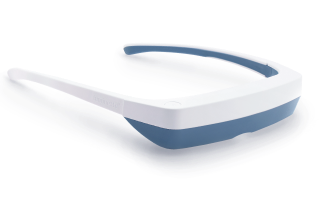
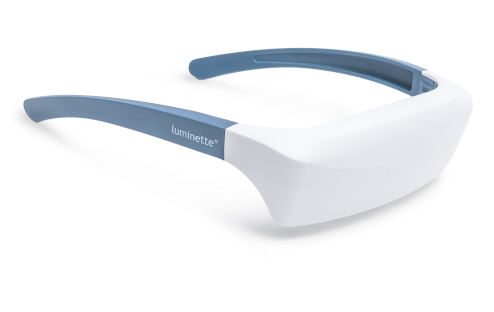
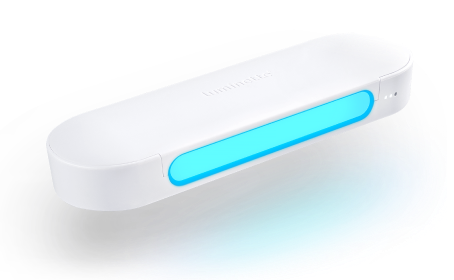
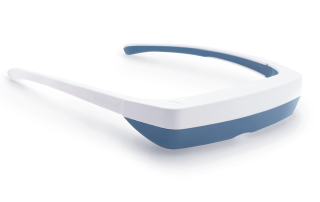
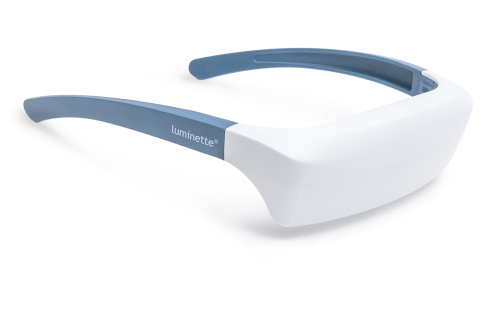
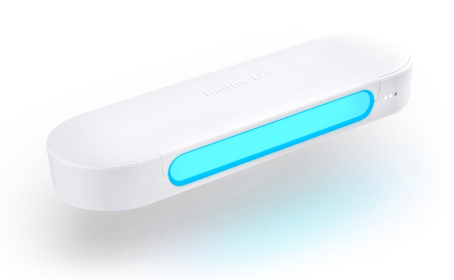
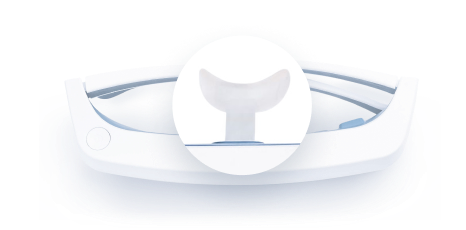
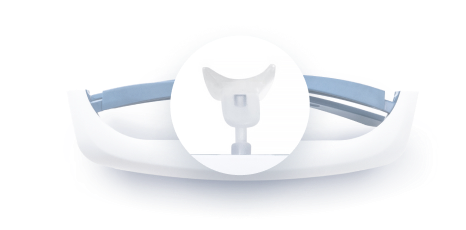
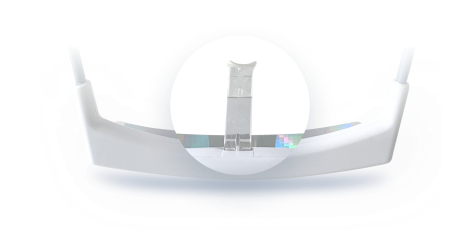
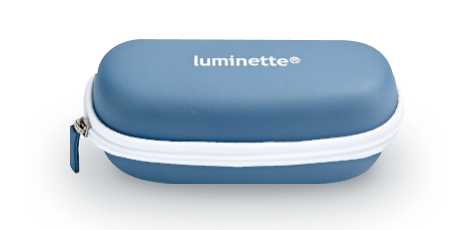
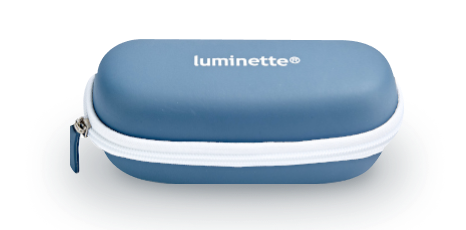





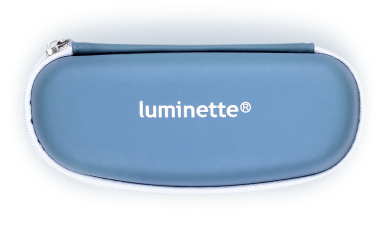
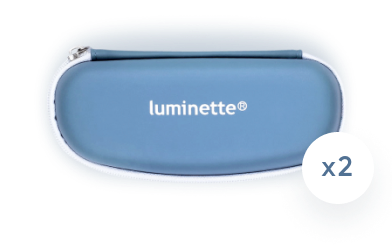
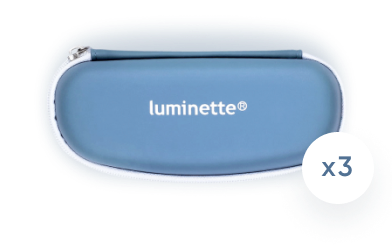
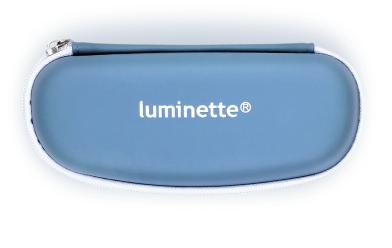
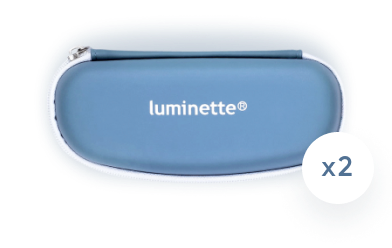
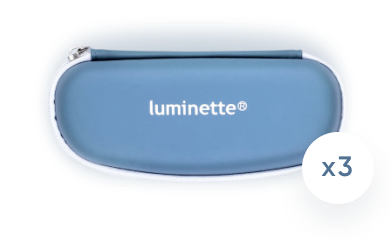
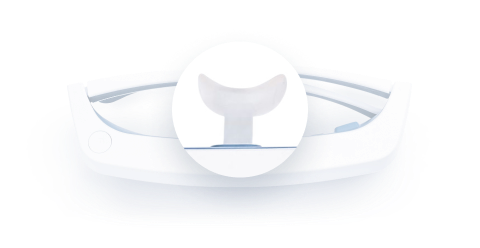
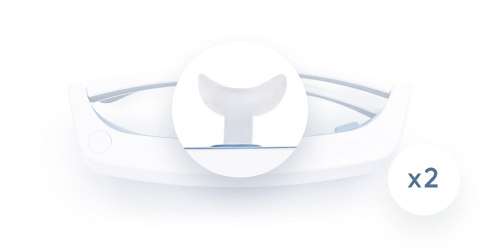
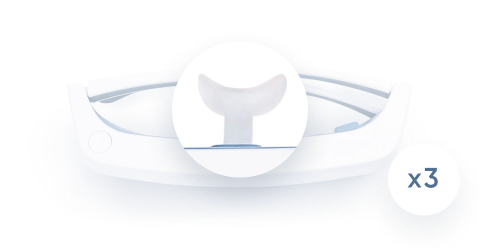
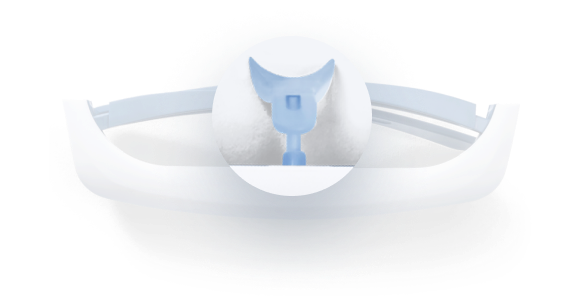
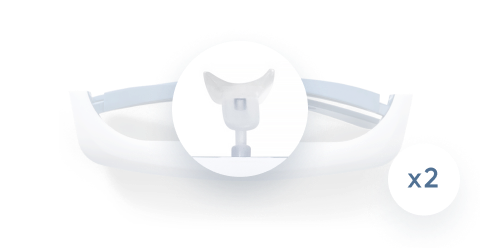
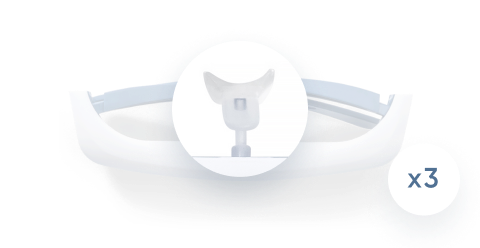
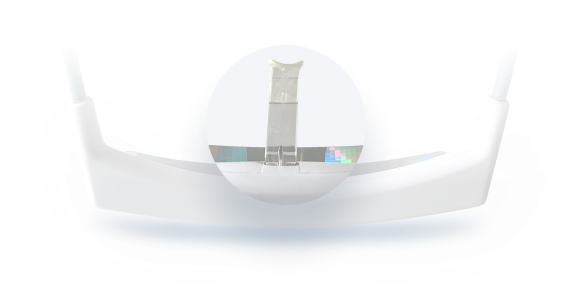
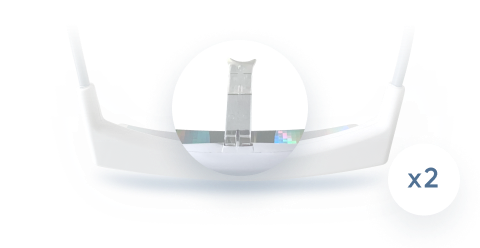
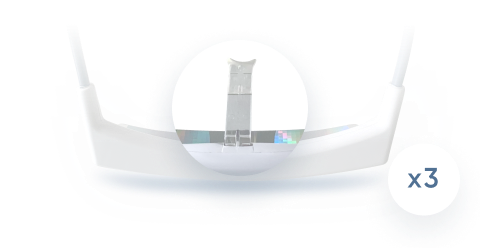
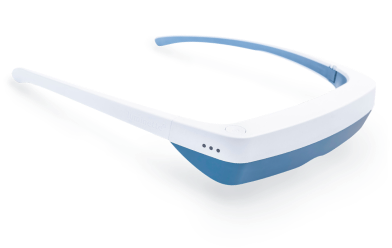
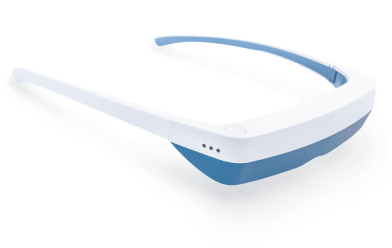
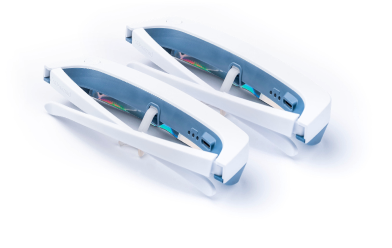
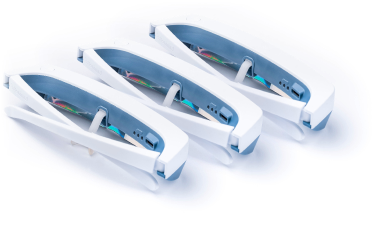
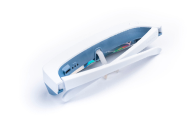
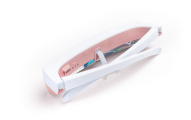
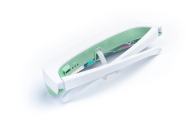
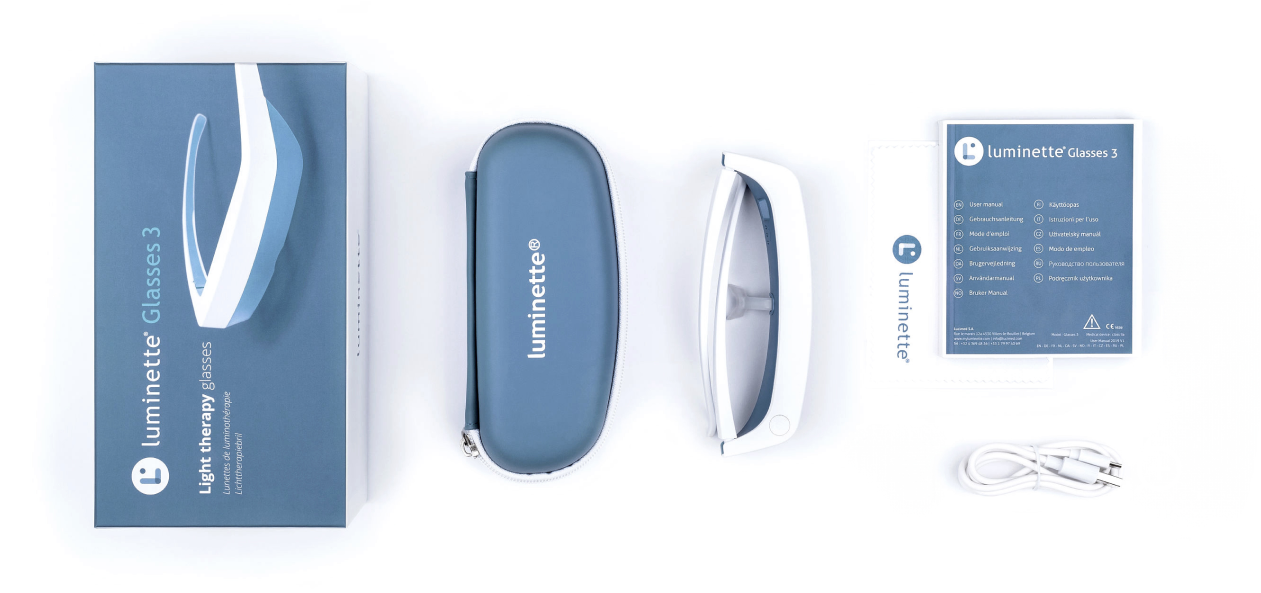
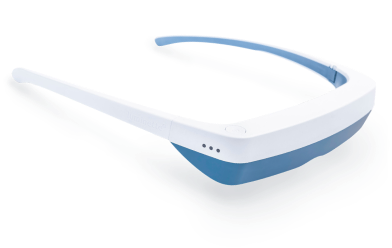


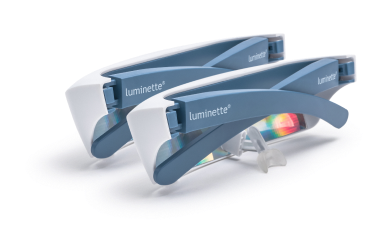
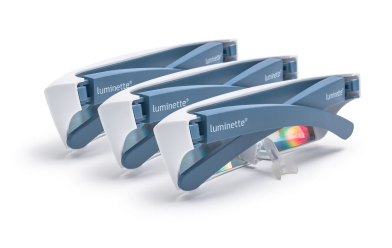
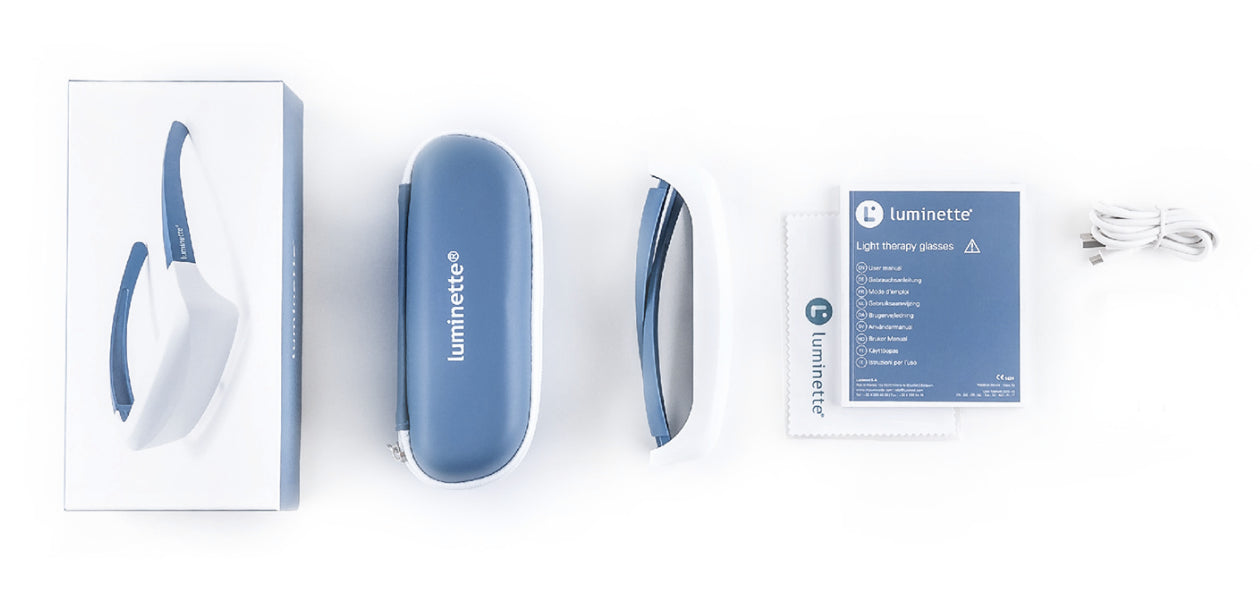
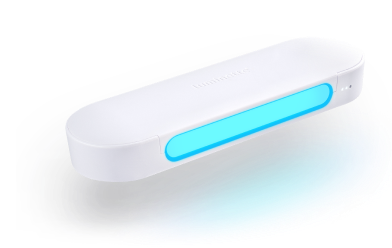
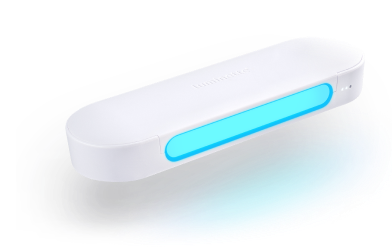
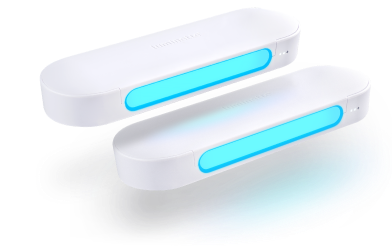
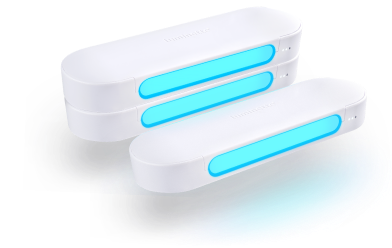
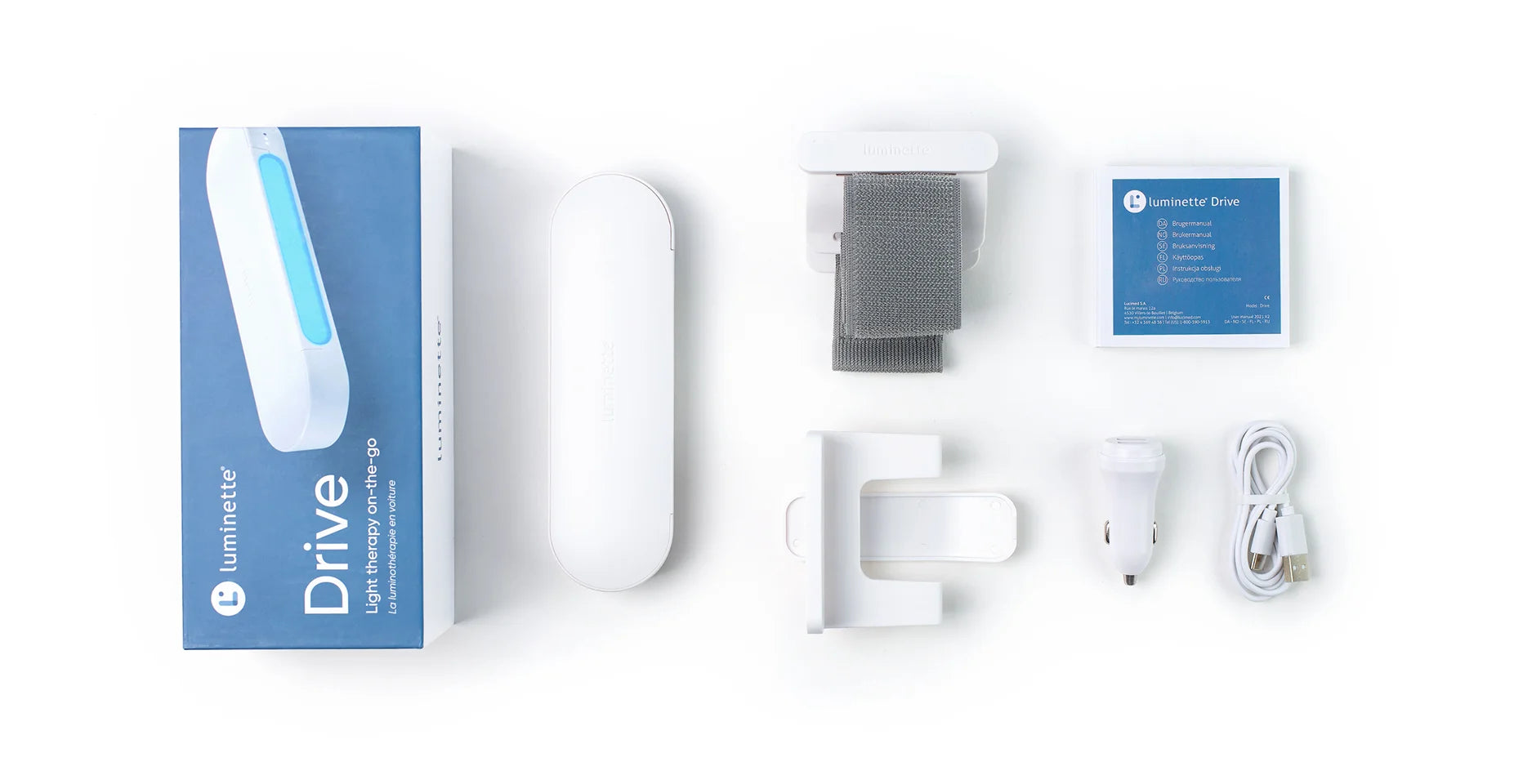

 Please note
Please note



